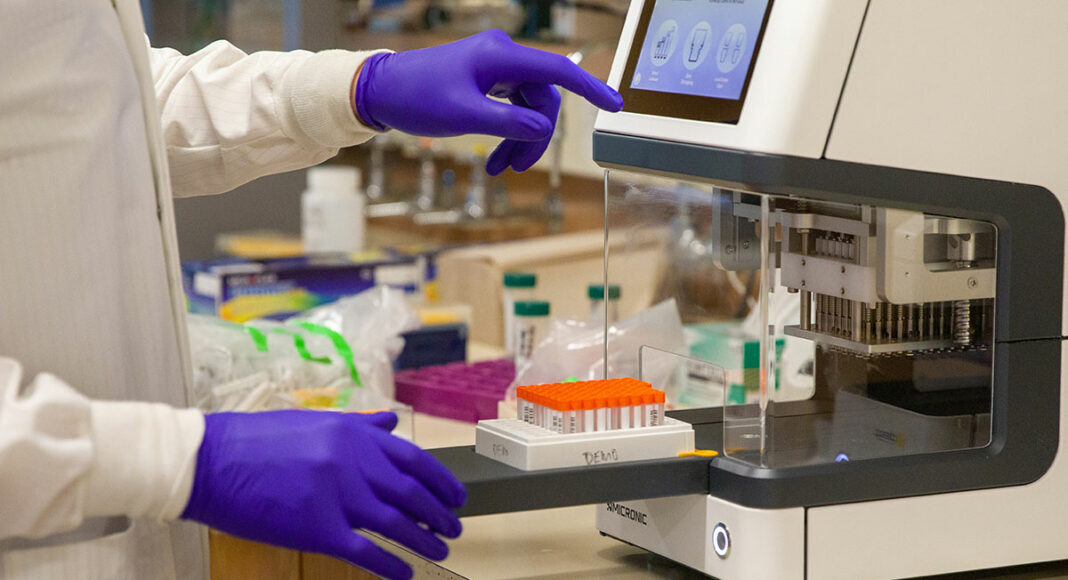If you want to understand RNA, the molecule that encodes the genetic code of the coronavirus, Santa Cruz is the place to be.
RNA is a molecule found in all living things. Among other functions, RNA acts as a messenger between our DNA and the rest of the cell. But some viruses have bucked DNA completely and use RNA to inscribe their genetic code instead—including the virus that causes Covid-19.
UCSC has the world’s largest grouping of RNA researchers. So when the pandemic hit Santa Cruz and the county struggled to find enough testing, these scientists knew they were in a unique position to help out.
“Santa Cruz has this amazing strength in RNA molecular biology. And we thought that if anybody could get good at purifying RNA and counting viruses, it should be us,” says Jeremy Sanford, a professor at UCSC.
In spring 2020, Sanford and other professors decided to create their own Covid-19 diagnostic lab. Today, the Colligan Clinical Diagnostic Lab (CCDL) runs thousands of tests every week with the sole purpose to sniff out Covid-19 cases both at the university and in the larger Santa Cruz community.
“As scientists, we had this unique advantage that we had the tools, we had labs, and we had know-how that we could bring to bear on the immediate problem of the day,” says Michael Stone, another one of the lab’s founders.
Testing is essential for responding to a pandemic, as it allows public health officials to know who has the disease, who to isolate, and who may have been exposed.
At the start of the pandemic, however, “we were having a real problem with [testing] turnaround time,” says David Ghilarducci, the deputy health officer for Santa Cruz County. “It would sometimes take a week or 10 days to get a test result back, which is essentially useless.”
Sanford, Stone, and their colleagues realized that they could convert the lab equipment they used to study the fundamental nature of biology to test for the virus. So they decided to transform a research lab into the school’s very own Covid-19 diagnostic space. It took around two months to get the first test up and running, validating their first test on May 1.
In the beginning, the lab’s capabilities were modest. But by summer, the lab was ready to take on more tests. The CCDL reached out to county officials to see if they needed help with testing, a move Ghilarducci saw as a “tremendous opportunity.”
“They usually give us results in less than 24 hours, which is fantastic,” says Ghilarducci. “It’s been a huge asset to our county.”
Today, the lab tests samples from the county jail, essential workers, and other vulnerable communities in Santa Cruz. At the height of the January surge, the lab churned out 1,500 tests per day. Since May 1, the CCDL has diagnosed over 3,000 positive cases in Santa Cruz.
“More and more responsibility has fallen onto the lab, both from the county and within our university,” says Stone. “It’s like a train that’s left the station. It needs to keep chugging along.”
Once the pandemic is over, the lab’s founders hope to convert the space into a new type of diagnostic lab: this time, for pediatric oncology. Stone hopes that CCDL’s role in tackling the pandemic locally will help alleviate some of the town-gown tension and encourage members of the Santa Cruz community to be curious about the research taking place on campus.
“I think [the CCDL] was a really important gesture on the part of UCSC,” says Ghilarducci, who is also a UCSC alum. “It says, ‘We’re not just some independent party, we’re a partner in this community.’”












